The town of Sherborne, in northwest Dorset, is relatively small, but it’s oozing in character and has plenty to see and do. Here are some essential highlights:
Stroll Around the Town
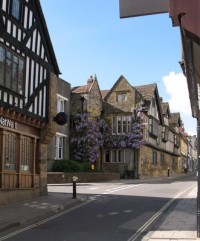 No visit to Sherborne is complete without a stroll around the town. The town itself is quite small, so it’s easy to explore on foot; car parking is available and the train station is close to the town centre. There are plenty of picturesque medieval and Georgian buildings to look at (even though some have modern signs adorning them now) and many of them were built from the distinctive ochre ham stone.
No visit to Sherborne is complete without a stroll around the town. The town itself is quite small, so it’s easy to explore on foot; car parking is available and the train station is close to the town centre. There are plenty of picturesque medieval and Georgian buildings to look at (even though some have modern signs adorning them now) and many of them were built from the distinctive ochre ham stone.
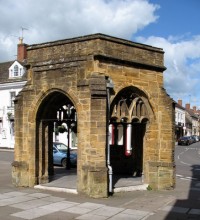 When walking down Cheap Street, in the town centre, you’ll no doubt spot a small stone hexagonal building. Known as The Conduit, it was originally built as a monk’s washing place in the Abbey cloister early in the 16th century.
When walking down Cheap Street, in the town centre, you’ll no doubt spot a small stone hexagonal building. Known as The Conduit, it was originally built as a monk’s washing place in the Abbey cloister early in the 16th century.
The historic almshouses of St John were licensed by Henry VI in 1437 and still remain today. While the former almshouses themselves are lived in, visitors are able to explore the chapel and ante-chapel. Both retain many original features, including a three paneled altar piece dating back to about 1480. To find out more about visiting times, check with the Sherborne Tourist Information Centre, located in Digby Street near the Abbey.
Today Sherborne has some delightful shops to explore, plus a good choice of coffee shops, restaurants and pubs. If you want to top off your visit with a cup of tea and cake, or a good meal, you’ll be well provided for.
Sherborne Abbey
When visiting the town, you must see Sherborne Abbey (it’s not hard to spot!). The building was founded way back in 705 by St Aldhelm and, from 1066, it was a Benedictine monastery. Bishop Alfwold subsequently rebuilt at a later stage, but the period of history most represented in the Abbey is from 1475-1504 and was the work of Abbot Ramsam.
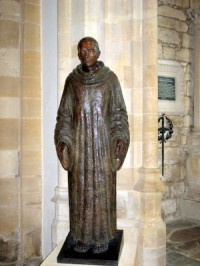 It was Abbot Ramsam who created the perpendicular style Norman nave and the fantastic vaulted ceiling. Most of the stained glass is 19th century and the great west window was added in 1997. In the north and south aisles are several interesting tombs, including that of a 13th century abbot, a tomb of Sir John Horsey and his son and the marble tomb of Abbot Clement. The Sherborne Abbey is still widely used today and has a thriving choir, which can be enjoyed at services on Sundays.
It was Abbot Ramsam who created the perpendicular style Norman nave and the fantastic vaulted ceiling. Most of the stained glass is 19th century and the great west window was added in 1997. In the north and south aisles are several interesting tombs, including that of a 13th century abbot, a tomb of Sir John Horsey and his son and the marble tomb of Abbot Clement. The Sherborne Abbey is still widely used today and has a thriving choir, which can be enjoyed at services on Sundays.
Sherborne Museum
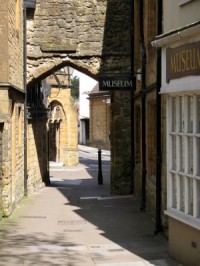 The Sherborne Museum could well be missed, as it’s tucked away down a side street (Church Lane, close to the abbey), but it’s well worth a visit. The Sherborne Museum has a range of exhibits, including costumes, photographs, paintings and plans relating to the history of the town. But perhaps the most impressive exhibit is the Sherborne Missal. The missal is an illustrated manuscript, or book, that contains the words and music needed to celebrate Mass and the Sherborne Missal is believed to date back to about 1385. As well as being an excellent example of an illuminated manuscript, the Sherborne Missal differs from others by containing numerous portraits of the patron (the Abbot of Sherborne, Robert Bruyning), scribe and artist, plus 48 pictures of birds.
The Sherborne Museum could well be missed, as it’s tucked away down a side street (Church Lane, close to the abbey), but it’s well worth a visit. The Sherborne Museum has a range of exhibits, including costumes, photographs, paintings and plans relating to the history of the town. But perhaps the most impressive exhibit is the Sherborne Missal. The missal is an illustrated manuscript, or book, that contains the words and music needed to celebrate Mass and the Sherborne Missal is believed to date back to about 1385. As well as being an excellent example of an illuminated manuscript, the Sherborne Missal differs from others by containing numerous portraits of the patron (the Abbot of Sherborne, Robert Bruyning), scribe and artist, plus 48 pictures of birds.
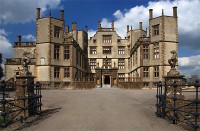 Written in Latin, the original copy now lives in the British Library in London, but modern technology has allowed the creation of an excellent technological ‘touch screen’ facility in the Sherborne Museum. The clear images and page turning effect make it almost like reading the original version.
Written in Latin, the original copy now lives in the British Library in London, but modern technology has allowed the creation of an excellent technological ‘touch screen’ facility in the Sherborne Museum. The clear images and page turning effect make it almost like reading the original version.
The Sherborne Castles are also located in the town and are well worth a visit. I have written an entire article dedicated to the Sherborne Castles (see link.)


Comments